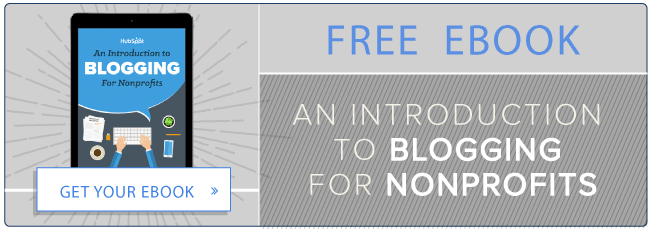
SEO can be a funny thing. Part of SEO's stupendous value is that a well-optimized webpage can keep generating quality traffic to your nonprofit's online presence years after it was first published. It's your little worker bee that's always buzzing along making honey in the background.
It also means your SEO work is never done. Pages can always be better optimized. They also need to be refreshed to reflect changes in your keyword strategy or to adapt to changes in Google's SERP priorities, which happen constantly.
Your SEO might be awesome right now. That's terrific. But that doesn’t mean it also can't get even better.
Upping the Ante in Your On-Page SEO
You have the most control over your on-page SEO, which makes it a great place start. First thing to do is to analyze what you currently have going on.
If it's been awhile since you took a look at your keyword list, time for a fresh look. Perhaps in the last few years, your constituents were most concerned with improving their professional certification and credentials. But now, they may have greater concerns about their options for health insurance. Who knows? But that's precisely the point.
Take a close look at what new issues people may be emailing you about. What are your constituents talking about on social media? Find out what new questions and concerns they have. Keep an eye out for whether they're asking similar questions but in different ways. For example, the credit card space is increasingly competitive with a lot of free comparison tools out there. A credit union may want to look into whether repositioning its credit card content and offers with more relevant keywords could bring in more qualified traffic.
Brainstorm a new list of keywords based on what you learn. Use it to refresh existing content and build a new topic list. Start publishing content that reflects your potential constituents' new priorities.
A second way to do some ground analysis is to grade your website's current SEO status. HubSpot's Website Grader will point out some quick wins and areas that need further development. If your pages load slowly, or your site isn't optimized for mobile, the Grader will let you know. It will also provide some direct SEO tips where it thinks a page is falling short.
Google constantly changes its SEO algorithm and tag properties. Google recently pushed organic results further down the page by inserting a fourth paid ad spot. As compensation (of sorts), it expanded the character count for titles and meta descriptions. You may want to rework all (or just some) of your organization's webpage titles and meta description tags to keep up with the changes.
Also review pages to ensure they're optimized around one choice keyword, and that all your possible tags and headings are SEO-optimized. Do your blog posts tend to be long stretches of text? Write keyword optimized headers (and tag them appropriately — H1, H2, etc.) for a collection of your most relevant posts. Google reads images – do you have alt-text for all of your images? (BTW – that alt-text for images Is used by voice recognition systems for reading aloud your pages. As hands-free laws are becoming more strictly enforced, this tag will become important as people rely more on "Siri" and her counterparts to read your organization's webpages to them while driving, etc.)
Getting Those Off-Page Backlinks
You know you need backlinks to validate your website and blog's authority. You put social sharing icons on all your pages to help that. But if you want to take your backlink SEO strategy to the next level, you need to get pro-active.
Test out including some context-specific sharing CTA by your social icons. If you have a blog post reviewing popular professional resources that members of your trade organization might use, you can add copy at the end of the post specifically encouraging them to share this list with their colleagues. "Share this on Facebook: Fellow welders – heads up! Get the new Guide to OSHA Certification Standards for Welding Equipment [yourURL]. Will save you tons of $$!"
You can also set up an influencer program. Influencers are people who regularly share content to people who fit your target market. You can start your search for influencers at home by looking at your constituents, board members, and corporate partners to find people with some social media traction.
Don't overlook people who aren't yet part of your organization's family, such as bloggers who write about your industry and relevant online publications. Do some social listening to find bloggers and sites that are also using your keywords or talking about the same issues as your organization.
Reach out to them individually. See if they'll write a post for you, or interview one of your association's executives on a hot topic, or write a review on a piece of your organization's content that would be of particular interest to them. Many online publications are starving for new content. They're always on the lookout for posts or new content for their sites.
Are you getting into video yet? Video has begun as the next major shift in online consuming habits. Start your YouTube channel with whatever video content you already have: talks at events, constituent testimonials, education videos. Like a blog post, each video has its own set of SEO tags you can use so it gets found. Each video is also another source to link back to your website or blog. Videos are also highly shareable, which means other people will be generating back links for you as well.
SEO is the Gift that Keeps on Giving
An effective SEO strategy continues to generate traffic and returns that far outpace its low cost long after you first implemented it. Yet to maximize your returns and keep your new content on track, revising your SEO strategy is a wise investment.
Never be content. With the constant changes in your persona preferences and the search quirks of the Google gods, you can always find ways to build on your past SEO success.
from HubSpot Marketing Blog http://blog.hubspot.com/marketing/the-modern-nonprofits-guide-to-seo
Via http://blog.hubspot.com/marketing/the-modern-nonprofits-guide-to-seo

No comments:
Post a Comment